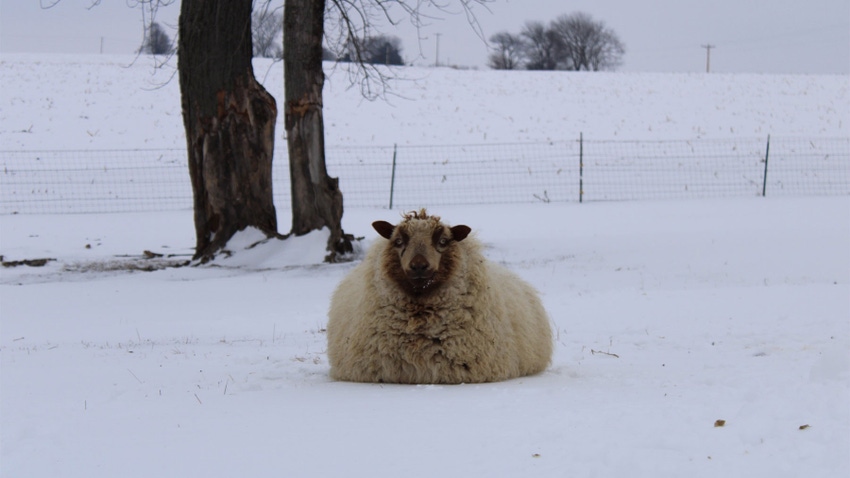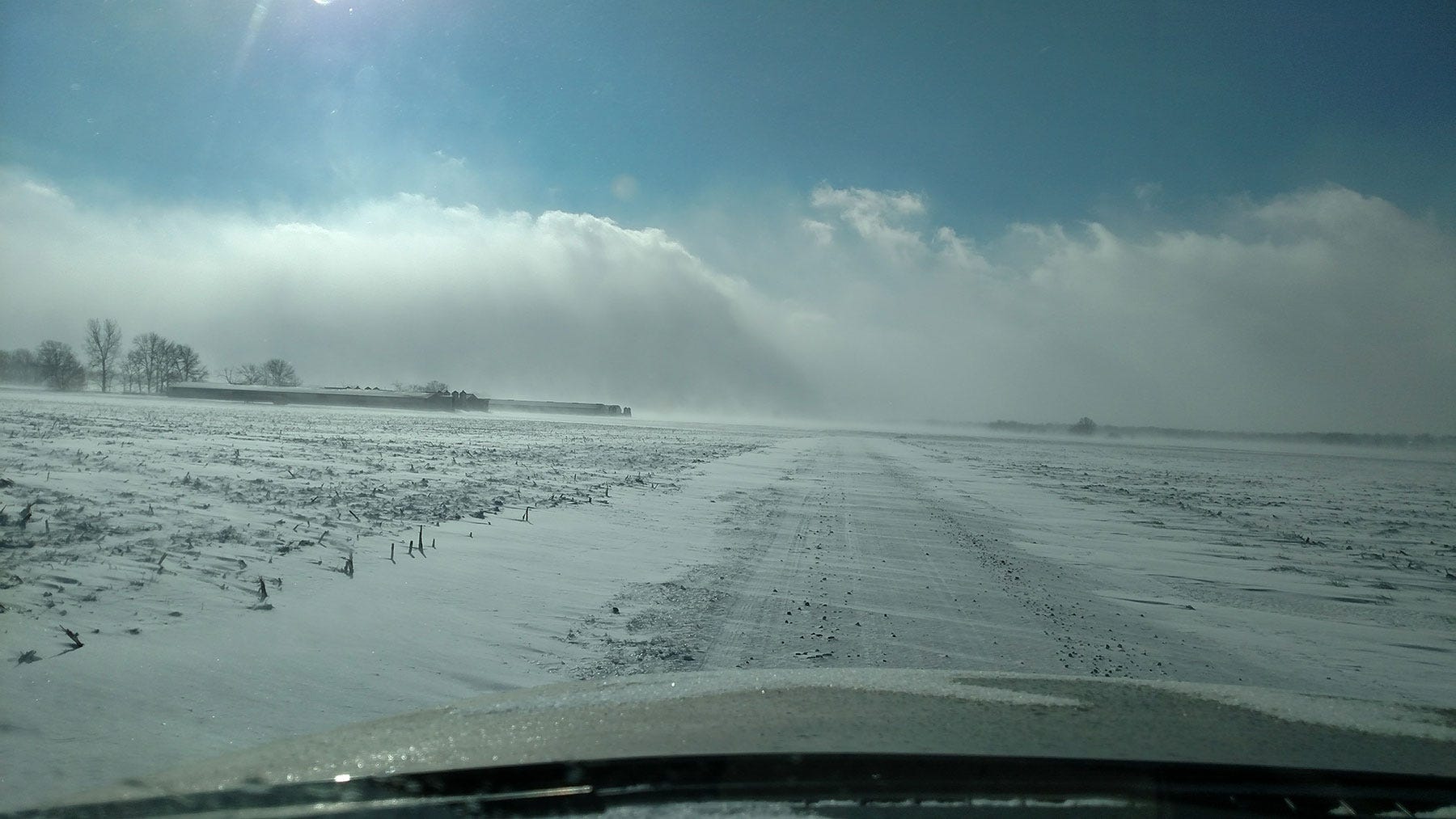October 18, 2023

With a busy harvest season underway, winter prep for livestock can seem far away. But now is the time to start working through that checklist.
“The long-term forecasts that I’ve seen would suggest that we could have a pretty significantly tough winter this year,” says Ron Lemenager, Purdue Extension beef specialist.
With that in mind, he shares that livestock producers should begin notching off items on their winter prep checklist. The item that should be at the top of everyone’s list is securing hay.
“All indications are that the hay supply is going to be short,” Lemenager says. “So, I think one of the things to really be contemplating is, ‘What do I have on inventory, and what do I need to get me through the winter?’”
Stretching low hay supply
There are some ways to maximize hay and other forage sources heading into the winter months. One important resource that producers should consider using is their harvested fields. Crop residues can help make the most of a hay supply.
Lemenager also stresses finding ways to minimize forage waste. A key piece of advice he has for producers is to use bale feeders.
Now is also the time for producers to evaluate their herd and cull lower-quality animals.
“Cattle prices are pretty high, so this is not a bad time to think about getting rid of some of those low-performing cows, like those cows that failed to conceive,” Lemenager says. “I think that all of the other species can look at it from a similar standpoint.”

TOUGH WINTER: While the past few winters have been mild, this winter is gearing up to be harsher. Preparing for the cold months now can save headaches later. (Ron Lemenager)
One more way to help stretch the hay supply could be by getting hay tested. Lemenager recommends all producers send in samples to get tested so they can avoid over- or underfeeding.
“For those livestock producers that are feeding hay and forages, they probably need to get those forages tested,” Lemenager says. “Feed is expensive, and I don’t want to shortchange the animals from the standpoint of meeting their requirements; but on the other hand, I don’t want to overfeed either.”
Keep animals happy and healthy
In addition to maintenance and feed preparations, Lemenager says producers should keep an eye on their livestock throughout the winter to ensure they’re in good shape. Body condition score can be a helpful measurement to track.
“Monitor body condition,” Lemenager adds. “Body condition score is a composite number that helps producers understand how well the animal is in balance with the environment that I’m asking it to work in.”
He also says producers can work with a nutritionist to evaluate available feed sources and calculate what is needed to get through the winter.

WATER FIRST: It is essential to provide livestock with fresh water throughout the winter. Keeping extra water heaters on hand can ensure a thawed supply even if one of the heaters breaks. (Dennis Lund)
While it’s vital to ensure livestock are fed and healthy, it’s also important to keep them comfortable and happy. David Hardin, Danville, Ind., raises hogs and has weathered over 20 winters with his operation. He says the No. 1 thing hog farmers should focus on is ventilation.
“If you don’t keep fresh air in the buildings — air that’s not too humid — the pigs are going to be uncomfortable,” Hardin says. “So, they’re not going to grow as well, and they might not be as healthy.”
To prepare for proper ventilation during winter months, Hardin recommends checking buildings for any holes that need patching and making sure curtains are in good shape.
Time to stock up
The last area of winter preparation is stocking up on supplies that could come in handy during a snowstorm or outbreak of negative temperatures. Lemenager says it’s important to keep extra water heaters and parts on hand.
“You want to have an extra one sitting on the shelf, because it’s going to take you a couple days probably to get one to replace it,” Lemenager adds. “That’s going to be really frustrating if you’ve got an automatic waterer that’s frozen, and animals don’t have access to water.”
Hardin keeps extra propane heaters and generators on hand. He also recommends having a snowplow or snow blower in case a sudden snowstorm keeps producers from accessing their buildings.
“If you have a building that’s snowed in, and you can’t get feed to those animals, that can be a serious issue,” Hardin says. “You’ve got to at least have plans for how to contend with snow or ice or things of that nature.”

BATTLING THE WEATHER: A set of hog finishing barns are hidden in the distance behind drifting snow during an emergency-travel-only advisory. (David Hardin)
Hardin also explains that now is the time to develop a pest management plan if you don’t already have one. With rodents seeking shelter as temperatures drop, he finds it’s important to keep his pest management program operating smoothly through the winter.
Hardin also keeps extra feed on hand. Inclement weather can halt deliveries and cause problems for producers who rely on delivered feed. He recommends planning and keeping an extra supply. Ice storms can take down power lines, so it’s not a bad idea to have some spare generators ready to go.
Why now?
Fall is a hectic time of year, but Hardin keeps a simple saying in mind that explains the need for early livestock winter preparation.
“The old adage ‘plan in advance, leave nothing to chance’ is kind of the mantra that we try and go for when it comes to prepping for winter,” Hardin says.
While completing a winter preparation checklist can help make for a smoother transition to the winter months, ultimately, the weather is out of producers’ control. There will be some days that are harder than others.
“When you’ve got to contend with subzero temperatures and blizzard-like conditions, you’ve got to do what you can to keep those animals warm and keep their water thawed out and get them fed,” Hardin says.
Read more about:
WinterAbout the Author(s)
You May Also Like






